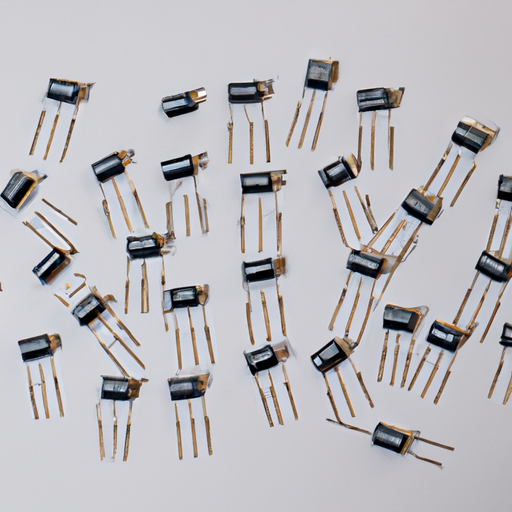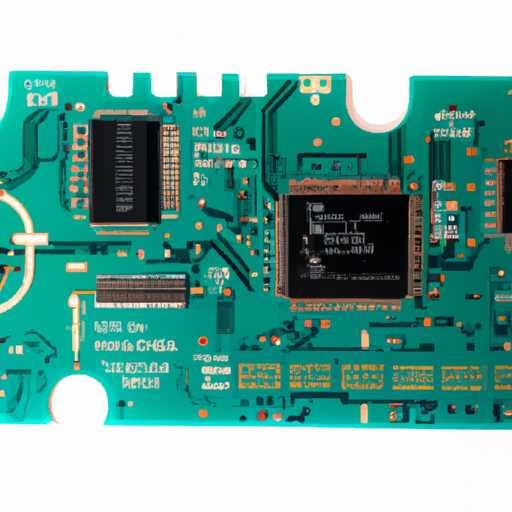What are the popular models of sensitive resistors?
Popular Models of Sensitive Resistors
I. Introduction
Sensitive resistors are crucial components in the realm of electronics, playing a pivotal role in various applications ranging from industrial machinery to consumer gadgets. These resistors are designed to respond to changes in environmental conditions, such as temperature, pressure, light, and mechanical stress. Their ability to provide accurate readings makes them indispensable in modern technology. This article will delve into the different types of sensitive resistors, their applications, popular models, and future trends in this evolving field.
II. Understanding Sensitive Resistors
A. What are Sensitive Resistors?
Sensitive resistors are electronic components that exhibit a significant change in resistance in response to external stimuli. They are designed to detect variations in physical quantities and convert them into measurable electrical signals. The primary types of sensitive resistors include thermistors, strain gauges, photoresistors, piezoelectric resistors, and conductive polymer resistors.
B. Key Characteristics
1. **Sensitivity**: This refers to the degree to which a resistor can detect changes in the measured variable. High sensitivity is essential for applications requiring precise measurements.
2. **Resistance Range**: Sensitive resistors come in various resistance ranges, which determine their suitability for different applications.
3. **Temperature Coefficient**: This characteristic indicates how much the resistance changes with temperature. A low temperature coefficient is often desirable for stability in varying conditions.
4. **Response Time**: The speed at which a sensitive resistor reacts to changes in the measured variable is critical, especially in dynamic applications.
III. Applications of Sensitive Resistors
A. Industrial Applications
1. **Temperature Measurement**: Sensitive resistors like thermistors are widely used in industrial settings for accurate temperature monitoring and control.
2. **Pressure Sensors**: Strain gauges are employed to measure pressure changes in various systems, ensuring safety and efficiency.
B. Consumer Electronics
1. **Audio Equipment**: Sensitive resistors are integral in audio devices, helping to manage sound levels and enhance audio quality.
2. **Wearable Technology**: Devices such as fitness trackers utilize sensitive resistors to monitor physiological parameters like heart rate and body temperature.
C. Medical Devices
1. **Monitoring Equipment**: Sensitive resistors are essential in medical monitoring devices, providing real-time data on patient vitals.
2. **Diagnostic Tools**: They are also used in diagnostic equipment to ensure accurate readings for various health assessments.
IV. Popular Models of Sensitive Resistors
A. Thermistors
Thermistors are temperature-sensitive resistors that change resistance with temperature variations. They are categorized into two types:
1. **NTC Thermistors**: Negative Temperature Coefficient thermistors decrease in resistance as temperature increases. They are commonly used in temperature sensing applications.
2. **PTC Thermistors**: Positive Temperature Coefficient thermistors increase in resistance with rising temperature. They are often used in overcurrent protection and self-regulating heating applications.
**Applications and Advantages**: Thermistors are favored for their high sensitivity and accuracy in temperature measurement, making them ideal for HVAC systems, automotive applications, and medical devices.
B. Strain Gauges
Strain gauges are sensitive resistors that measure the amount of deformation or strain in an object. They come in various types, including:
1. **Wire Strain Gauges**: Made from fine wire, these gauges are used in applications requiring high precision.
2. **Foil Strain Gauges**: These are made from a thin metallic foil and are widely used due to their ease of application and reliability.
**Applications in Structural Health Monitoring**: Strain gauges are crucial in civil engineering for monitoring the integrity of structures like bridges and buildings, ensuring safety and longevity.
C. Photoresistors (LDRs)
Photoresistors, or Light Dependent Resistors (LDRs), change resistance based on light intensity.
**Working Principle**: When light falls on the LDR, its resistance decreases, allowing more current to flow. This property makes them ideal for light-sensing applications.
**Applications in Light Sensing**: LDRs are commonly used in automatic lighting systems, cameras, and solar garden lights, where they help adjust brightness based on ambient light conditions.
D. Piezoelectric Resistors
Piezoelectric resistors generate an electrical charge in response to mechanical stress.
**Mechanism of Action**: When pressure is applied, these resistors change their resistance, allowing for the measurement of force or pressure.
**Use in Sensors and Actuators**: They are widely used in applications such as accelerometers, pressure sensors, and even in musical instruments to convert vibrations into electrical signals.
E. Conductive Polymer Resistors
Conductive polymer resistors are made from organic materials that exhibit conductive properties.
**Characteristics and Benefits**: They are lightweight, flexible, and can be produced in various shapes and sizes, making them suitable for innovative applications.
**Applications in Flexible Electronics**: These resistors are increasingly used in wearable technology and flexible displays, where traditional resistors may not be viable.
V. Comparison of Popular Models
A. Sensitivity and Accuracy
Different sensitive resistors offer varying levels of sensitivity and accuracy. For instance, thermistors are highly sensitive to temperature changes, while strain gauges provide precise measurements of mechanical stress.
B. Cost and Availability
Cost can vary significantly among different types of sensitive resistors. Thermistors and photoresistors are generally more affordable and widely available, while specialized strain gauges may be more expensive due to their precision manufacturing.
C. Environmental Considerations
Some sensitive resistors are more robust against environmental factors than others. For example, piezoelectric resistors can operate in harsh conditions, while thermistors may require careful handling to avoid damage.
D. Longevity and Reliability
Longevity and reliability are critical factors in choosing sensitive resistors. Thermistors and strain gauges are known for their durability, while conductive polymer resistors may have a shorter lifespan under certain conditions.
VI. Future Trends in Sensitive Resistor Technology
A. Advancements in Materials
Research is ongoing to develop new materials that enhance the performance of sensitive resistors. Innovations in nanotechnology and smart materials are expected to lead to more sensitive and reliable devices.
B. Integration with Smart Technologies
As the Internet of Things (IoT) continues to grow, sensitive resistors will increasingly be integrated into smart devices, enabling real-time monitoring and data collection.
C. Miniaturization and Flexibility
The trend towards miniaturization will lead to the development of smaller, more flexible sensitive resistors, making them suitable for a wider range of applications, particularly in wearable technology.
D. Sustainability and Eco-Friendly Options
With a growing emphasis on sustainability, manufacturers are exploring eco-friendly materials and production methods for sensitive resistors, aiming to reduce environmental impact.
VII. Conclusion
Sensitive resistors play a vital role in modern electronics, enabling precise measurements across various applications. From thermistors to strain gauges, each model offers unique advantages suited to specific needs. As technology advances, the future of sensitive resistors looks promising, with innovations in materials, integration with smart technologies, and a focus on sustainability. Understanding the characteristics and applications of these components is essential for selecting the right model for any project, ensuring optimal performance and reliability.
VIII. References
1. Academic Journals
2. Industry Reports
3. Manufacturer Specifications
4. Online Resources and Articles
This comprehensive overview of sensitive resistors highlights their importance in technology and the diverse models available, providing a foundation for further exploration in this fascinating field.


